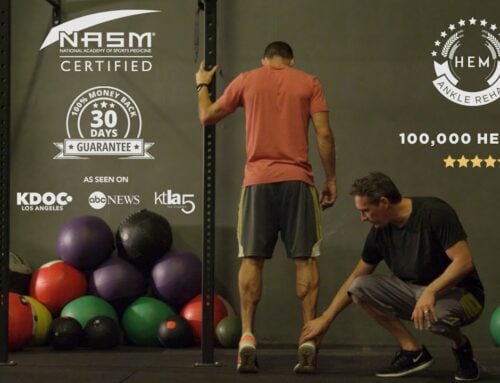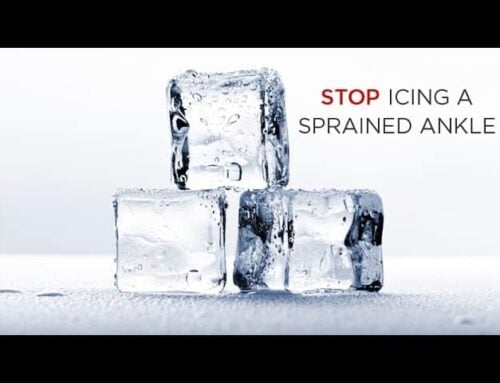
Dealing with a sprained ankle can be a frustrating and painful experience, especially for those who are constantly on the move. Many people wonder whether walking on a sprained ankle might actually make it worse. Understanding the nuances of ankle sprains and the best practices for recovery is essential to ensuring a swift return to normal activities. This article delves into the intricacies of ankle sprains, the potential risks of walking on a sprained ankle, and the best alternatives and preventative measures to take.
Understanding Ankle Sprains
What is an Ankle Sprain?
An ankle sprain occurs when the ligaments surrounding the ankle are stretched beyond their normal range, often resulting in a tear. These ligaments are vital for maintaining the stability of your foot and ankle, and when they are injured, it can lead to significant pain and swelling. Symptoms of an ankle sprain can include immediate swelling, bruising, and a sense of instability around the ankle. It’s important to note that not all sprains are the same; they can vary in severity from mild to severe, affecting the recovery time and the treatment plan required.
When you sprain your ankle, the extent of the injury can depend on how forcefully you twist or roll your ankle. Mild sprains might only involve minimal stretching or tearing of the ligaments, while severe ankle injuries can result in partial or complete tears. Understanding the nature of your sprain is crucial in determining how to proceed with care and whether walking on it might exacerbate the injury.
How Do Ankle Sprains Occur?
Ankle sprains commonly occur when you twist your ankle in an awkward manner, such as stepping on an uneven surface or landing improperly during physical activity. This causes the ligaments to stretch, sometimes beyond their capacity, leading to a sprain. Activities that involve sudden stops or changes in direction, such as sports, are frequent culprits. Even something as simple as wearing improper footwear can increase the risk of an ankle sprain.
The mechanics of an ankle sprain involve the unnatural movement of the foot and ankle, often leading to a roll or twist that places excessive stress on the ligaments. It’s essential to be aware of your environment and take precautions to avoid situations where you might roll your ankle. Understanding these risks can help you prevent future injuries and maintain the integrity of your ankle ligaments.
What are the Different Degrees of Ankle Sprains?
Ankle sprains are categorized into three degrees, each indicating the severity of the injury. A first-degree sprain involves mild stretching and microscopic tears of the ligament fibers, usually accompanied by mild pain and swelling. A second-degree sprain is more severe, involving partial tearing of the ligament, and is characterized by moderate pain, swelling, and bruising.
The third-degree sprain is the most severe, involving a complete tear of the ligaments. This results in significant pain, swelling, and instability, often making it impossible to bear weight on the injured ankle. Recognizing the degree of your sprain is crucial in determining the appropriate treatment options and whether walking on the sprained ankle might make it worse. Tailored treatment plans, including the use of an ankle brace or crutch, can help stabilize your ankle and promote healing.
The Risks of Walking on a Sprained Ankle
Can Walking on a Sprained Ankle Cause More Damage?
Walking on a sprained ankle can indeed make it worse, especially if the sprain is moderate to severe. When you walk on a sprained ankle, you risk further damaging the already injured ligaments, which can lead to increased pain and swelling. The additional stress placed on the foot and ankle can impede the healing process, potentially leading to more serious complications.
The temptation to walk on a sprained ankle, despite the discomfort, can often be strong, particularly if you feel the need to remain active. However, doing so can extend the recovery time and increase the risk of developing chronic ankle instability. To avoid walking on a sprained ankle can help reduce swelling and facilitate a more effective healing process. Consulting a healthcare professional for a tailored treatment plan can provide valuable guidance on how to care for your sprained ankle properly.
What are the Potential Long-Term Consequences?
Ignoring a sprained ankle and continuing to walk on it can lead to long-term consequences, such as chronic pain and ankle instability. Over time, the repeated stress on the injured ligaments can cause them to heal improperly, resulting in a weakened ankle that is more susceptible to future injuries. This instability can make everyday activities challenging and increase the likelihood of another sprain.
In some cases, individuals may develop a condition known as chronic ankle instability, where the ankle frequently gives way, particularly during physical activity. This can significantly impact quality of life and may require ongoing physical therapy to manage. Understanding the potential long-term consequences highlights the importance of proper care and avoiding walking on the sprained ankle to ensure a full recovery.
How Do You Know If You’re Causing More Harm?
Recognizing the signs that you might be causing more harm to your sprained ankle is crucial for preventing further damage. Persistent pain and swelling that do not improve with rest and treatment are indicators that walking on the ankle might be making the injury worse. Additionally, if you experience increased bruising or a reduction in mobility, it may be a sign that the injury is not healing properly.
Monitoring the symptoms of an ankle sprain and being aware of any changes can help you determine whether walking on the sprained ankle is advisable. Seeking medical advice and potentially using an ankle brace to stabilize your ankle can provide the support needed to facilitate healing. Remember, taking the necessary precautions and adhering to a tailored treatment plan can get you back on your feet more safely.
Alternatives to Walking on a Sprained Ankle
What are Safer Mobility Options?
When dealing with a sprained ankle, it’s important to explore safer mobility options that can help prevent further injury. Using crutches is a common alternative that allows you to move around without placing weight on the injured ankle, giving the ligaments the rest they need to heal properly. An ankle brace can also provide support and stability, helping to reduce pain and swelling.
Other options include a knee scooter or a wheelchair, which can offer mobility without the risk of walking on the injured ankle. These alternatives can significantly aid in recovery by minimizing the stress placed on the ankle ligaments. Additionally, focusing on non-weight-bearing activities, such as swimming or cycling, can maintain fitness levels while supporting the healing process.
When is it Safe to Start Walking Again?
Determining when it’s safe to start walking again after an ankle sprain is a critical aspect of recovery. It’s generally advised to wait until the pain and swelling have significantly reduced, and you can move the ankle without discomfort. Consulting with a healthcare professional can provide personalized guidance based on the severity of the sprain and your overall health.
Gradually reintroducing weight-bearing activities is important, beginning with short, supported walks while wearing an ankle brace. This approach helps to stabilize your ankle and prevent re-injury. Following a structured treatment plan, including physical therapy, can also aid in strengthening the ankle and ensuring a safe return to normal activities.
What is HEM Ankle Rehab and How Does It Help?
HEM Ankle Rehab is a comprehensive at home treatment approach designed to expedite the healing process of a sprained ankle. This method focuses on reducing pain and swelling through targeted exercises and therapies, promoting faster recovery and preventing future injuries. The program includes a combination of compression, elevation, and specific exercises to strengthen the ankle ligaments.
By adhering to the HEM Ankle Rehab protocol, individuals can experience a reduction in recovery time and a decrease in the likelihood of recurring sprains. This approach not only addresses the immediate symptoms but also works to stabilize your ankle in the long term. Emphasizing the importance of following a structured rehabilitation program can make a significant difference in how quickly and effectively you heal.
Preventing Future Ankle Sprains
What Exercises Strengthen the Ankles?
Strengthening exercises play a crucial role in preventing future ankle sprains by enhancing the stability and resilience of the ankle ligaments. Simple exercises, such as ankle circles, calf raises, and resistance band exercises, can significantly improve the strength and flexibility of the foot and ankle. Regularly incorporating these exercises into your routine can help fortify the ligaments, reducing the risk of a sprain.
Balance exercises, like standing on one leg or using a balance board, can also improve proprioception, which is your body’s ability to sense movement and position. This heightened awareness can prevent situations where you might twist or roll your ankle. Consistent practice of these exercises can build a robust foundation, making the ankle more resistant to injury.
How Does HEM Ankle Rehab Protect Your Ankle?
HEM Ankle Rehab not only aids in the recovery of a sprained ankle but also serves as a preventive measure against future injuries. By following the program’s guidelines, you can strengthen the ankle ligaments and improve overall joint stability. This proactive approach helps to safeguard your ankle against the stresses and strains of daily activities.
The HEM Ankle Rehab program emphasizes the importance of ongoing maintenance exercises and proper care for your sprained ankle. By continually working to strengthen and stabilize your ankle, you can significantly reduce the likelihood of re-injury. This comprehensive approach ensures that your ankle is well-protected, allowing you to engage in physical activities with confidence.
How Can Proper Footwear Make a Difference?
Wearing appropriate footwear is a simple yet effective way to prevent ankle sprains and protect your foot and ankle. Shoes that provide adequate support and cushioning can help absorb shock and reduce the risk of twisting or rolling your ankle. High-top shoes or those with an ankle brace can offer additional stability, especially during activities that involve rapid movements or changes in direction.
It’s essential to choose footwear that fits well and is designed for the specific activity you’re engaging in. For instance, running shoes are tailored to support forward motion, while basketball shoes provide lateral support. By investing in the right footwear, you can create a safer environment for your ankles, reducing the chances of injury.
Are There Lifestyle Changes to Consider?
Incorporating certain lifestyle changes can play a significant role in preventing ankle sprains and promoting overall joint health. Maintaining a healthy weight can reduce the strain on your foot and ankle, decreasing the risk of injury. Additionally, staying active and participating in regular physical activity can improve strength and flexibility, enhancing your body’s ability to withstand stress.
Paying attention to your body’s signals and allowing adequate rest and recovery time is also crucial. Overexertion can lead to fatigue, increasing the likelihood of a sprain. By adopting a balanced approach to activity and rest, you can support the health of your ankle ligaments and minimize the risk of future sprains.
Secret of the Pros
Everything You Need To Heal At Home
So, Why Rehab?
Most people think rest and ice will heal their ankle (even a severe sprain), but they end up with chronic ankle instability… 30% still have pain one year later!
And that causes all kinds of muscle imbalances in the body, which can lead more serious injuries, repeated ankle sprains and chronic ankle pain. It’s a terrible domino effect that can last for life.
That’s Where Rehab Comes In.
A great rehab program significantly improves how a sprained ankle heals. It eliminates pain fast and ensures your ankles are strong and stable with healthy range of motion, which helps prevent future sprains.
Rehab Is The Key To
Healing Ankle Injuries Fast
Recent studies have shown that rehab heals ankle ligaments safely and effectively. It’s the difference between the people that don’t heal a sprained ankle and the ones that do!
Injured Ankle
Without Rehab
Injured Ankle
With Rehab
HEM Ankle Rehab “Rehabs” Your Ankle

HEM is a complete ankle rehab and prehab program for the entire ankle, foot and calf complex. This is a very thorough program that contains so much more than anything else you can find online, but it’s still easy to do.
Scott will coach you through every step, as if you are with him, one on one. Just follow along with the videos to rebuild your ankle from the ground up.
You can expect pain free mobility and strong, stable ankles that are protected from an ankle sprain, without ankle braces!
REAL PEOPLE, REAL RESULTS
From Scott Malin, NASM-CPT, CES
Creator, HEM Ankle Rehab
October 08, 2025
Fifteen years ago, I had to give up what I love doing most… playing basketball. I sprained my ankles so many times that I could no longer play. It was devastating.
Like you, I used R.I.C.E. (rest, ice elevation, compression), but my ankles healed so slowly and badly, they eventually got so weak, I would sprain them just walking down the street!
Being a fitness trainer, the only thing I had going for me was a fascination with helping people get out of pain and strengthening their bodies.
So, I decided to research all the cutting edge techniques to heal an ankle sprain much faster and better than R.I.C.E.
After months of research, I discovered that icing an injury can have a negative affect on the body’s healing process. Studies show that ice can actually slow down healing and too much rest left the ankles weak and unstable. This was shocking, but only part of the story…
New research was suggesting a much more proactive approach to healing that involved much better rehab techniques proven to dramatically speed up the speed and quality of the healing process.
Instead of months, healing took only days. And, if you had a chronically weak ankle that was in pain, these techniques would quickly strengthen and stabilize the ankles.
I kept improving on these techniques, drawing from many different disciplines and simplified them.
Eventually, after many more months of trial and error, I created a simple at-home healing system with very reliable results.
Since I was a fitness trainer, I was able to help all my clients (celebrities and athletes) whenever they got injured. I was even on the news a few times.
The response from my clients and friends was so overwhelming that a few of them eventually convinced me to share it with everyone.
Today, I am humbled that over 100,000 people have healed fully and fast with my program.
So, if you have any kind of ankle injury (new or old), just follow along with me in the videos and I’ll show you exactly what to do until you are completely pain free.
My message is simple… you do not have to give up what you love. And you do not have to live with chronic pain from old injuries. Life is too short and there is a better way!
I truly hope you will start using my program so you can get your life back and do what you love, pain free (and yes, I still play basketball every week and LOVE it!)
Thank you!
Scott
Heal Your Ankle FAST ⇣

30 day money back guarantee
15 YEARS. 100K HEALED.

Secret of the Pros
Everything You Need To Heal At Home
REAL PEOPLE,
REAL RESULTS
So, Why Rehab?
Most people think rest and ice will heal their ankle (even a severe sprain), but they end up with chronic ankle instability… 30% still have pain one year later!
And that causes all kinds of muscle imbalances in the body, which can lead more serious injuries, repeated ankle sprains and chronic ankle pain. It’s a terrible domino effect that can last for life.
That’s Where Rehab Comes In.
A great rehab program significantly improves how a sprained ankle heals. It eliminates pain fast and ensures your ankles are strong and stable with healthy range of motion, which helps prevent future sprains.

Rehab Is The Key To
Healing Ankle Injuries Fast
Recent studies have shown that rehab heals ankle ligaments safely and effectively. It’s the difference between the people that don’t heal a sprained ankle and the ones that do!
Injured Ankle
Without Rehab
Injured Ankle
With Rehab
HEM Ankle Rehab
“Rehabs” Your Ankle

HEM is a complete ankle rehab and prehab program for the entire ankle, foot and calf complex. This is a very thorough program that contains so much more than anything else you can find online, but it’s still easy to do.
Scott will coach you through every step, as if you are with him, one on one. Just follow along with the videos to rebuild your ankle from the ground up.
You can expect pain free mobility and strong, stable ankles that are protected from an ankle sprain, without ankle braces!
100,000 PEOPLE HEALED-
-
-
-
-
-
-
-
-
-
-
-
-
-
-
-
-
-
From Scott Malin, NASM-CPT, CES
Creator, HEM Ankle Rehab
October 08, 2025
Fifteen years ago, I had to give up what I love doing most… playing basketball. I sprained my ankles so many times that I could no longer play. It was devastating.
Like you, I used R.I.C.E. (rest, ice elevation, compression), but my ankles healed so slowly and badly, they eventually got so weak, I would sprain them just walking down the street!
Being a fitness trainer, the only thing I had going for me was a fascination with helping people get out of pain and strengthening their bodies.
So, I decided to research all the cutting edge techniques to heal an ankle sprain much faster and better than R.I.C.E.
After months of research, I discovered that icing an injury can have a negative affect on the body’s healing process. Studies show that ice can actually slow down healing and too much rest left the ankles weak and unstable. This was shocking, but only part of the story…
New research was suggesting a much more proactive approach to healing that involved much better rehab techniques proven to dramatically speed up the speed and quality of the healing process.
Instead of months, healing took only days. And, if you had a chronically weak ankle that was in pain, these techniques would quickly strengthen and stabilize the ankles.
I kept improving on these techniques, drawing from many different disciplines and simplified them.
Eventually, after many more months of trial and error, I created a simple at-home healing system with very reliable results.
Since I was a fitness trainer, I was able to help all my clients (celebrities and athletes) whenever they got injured. I was even on the news a few times.
The response from my clients and friends was so overwhelming that a few of them eventually convinced me to share it with everyone.
Today, I am humbled that over 100,000 people have healed fully and fast with my program.
So, if you have any kind of ankle injury (new or old), just follow along with me in the videos and I’ll show you exactly what to do until you are completely pain free.
My message is simple… you do not have to give up what you love. And you do not have to live with chronic pain from old injuries. Life is too short and there is a better way!
I truly hope you will start using my program so you can get your life back and do what you love, pain free (and yes, I still play basketball every week and LOVE it!)
Thank you!
Scott
Hurry, sale ends soon!
30 day money back guarantee



























